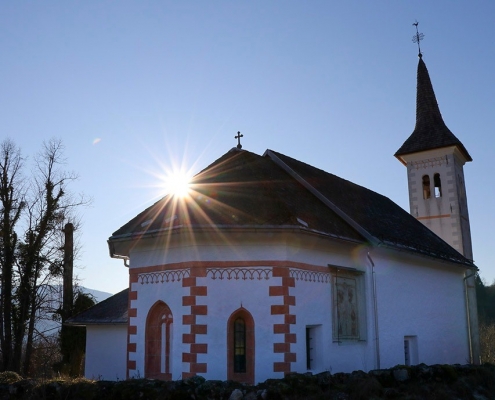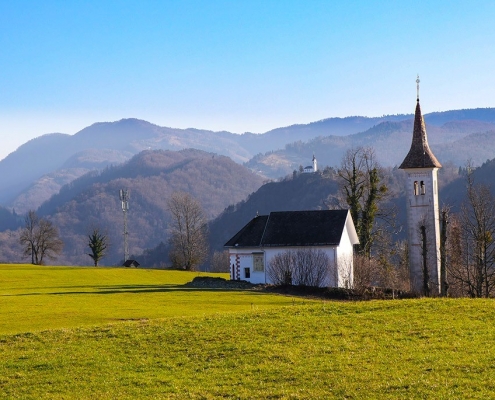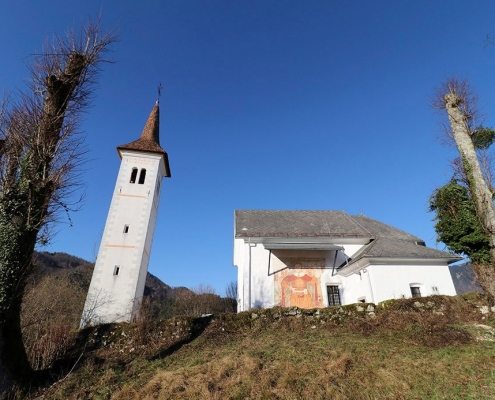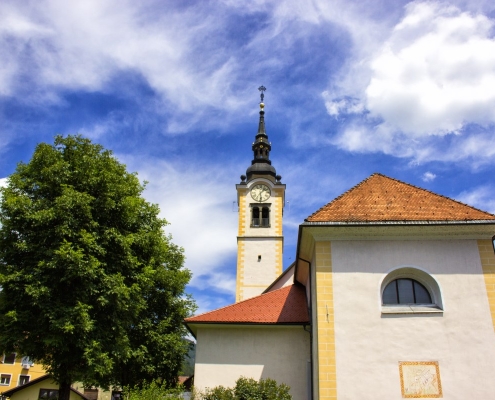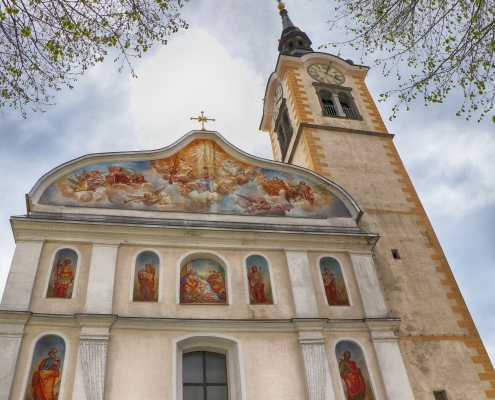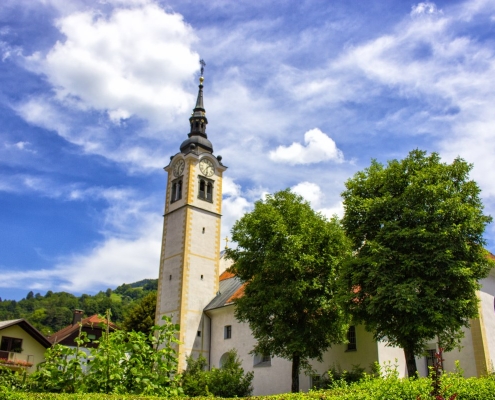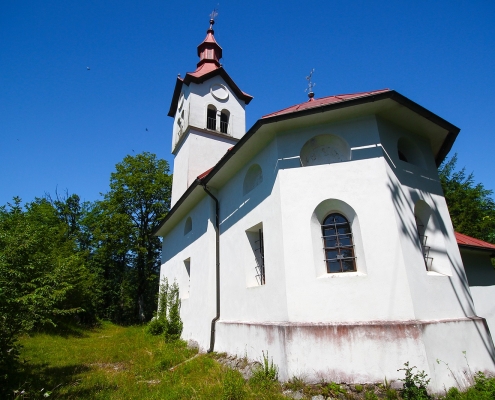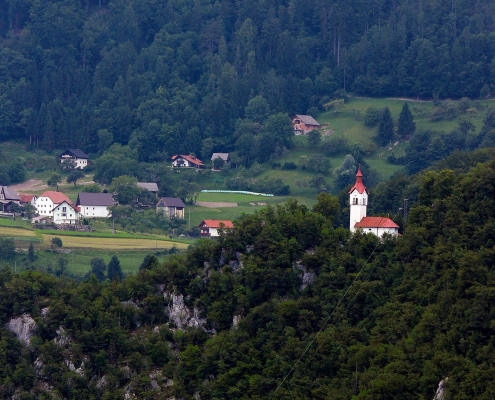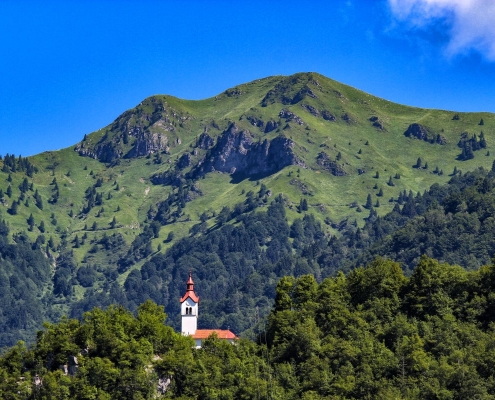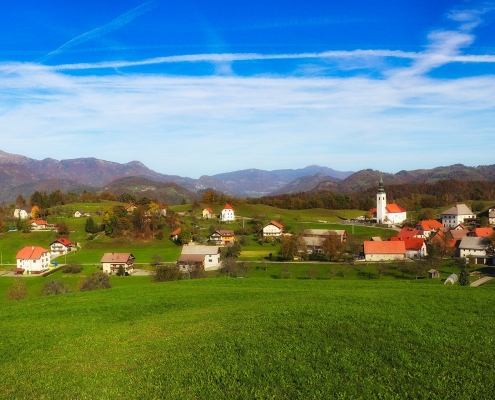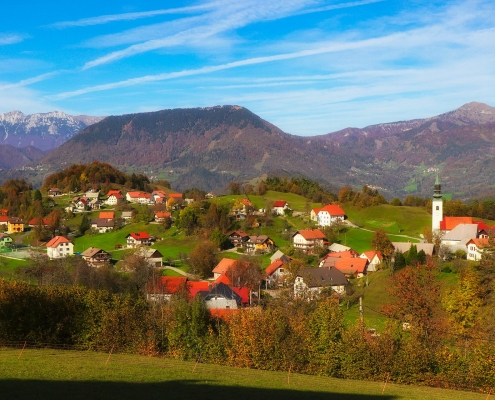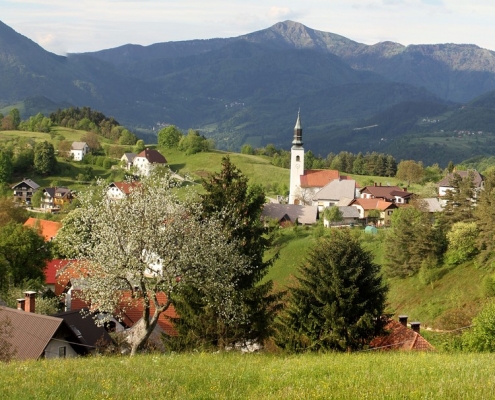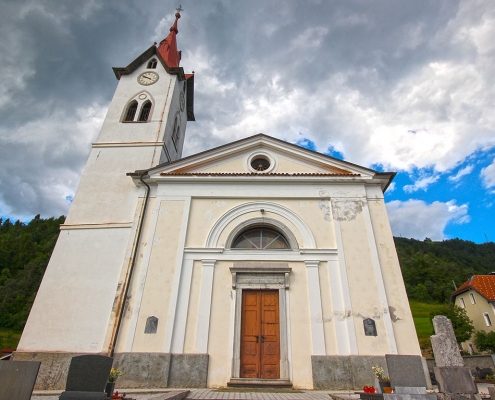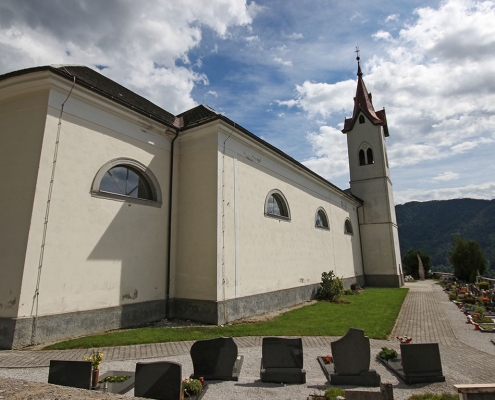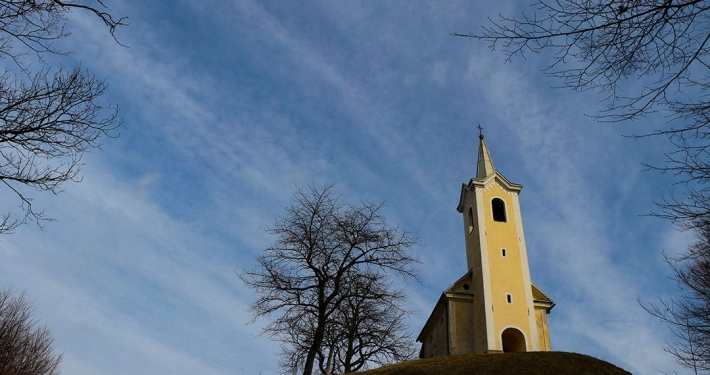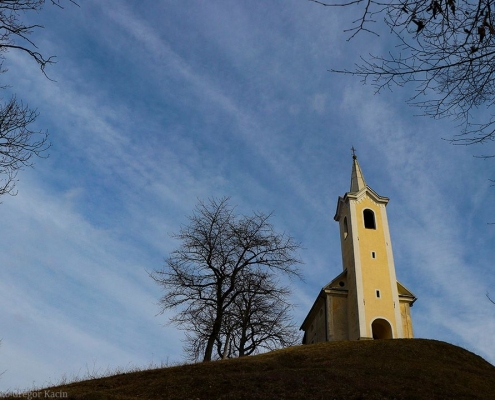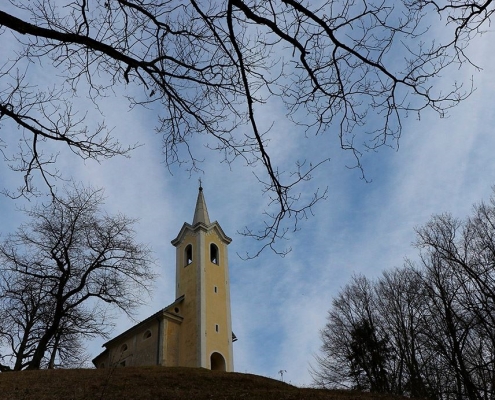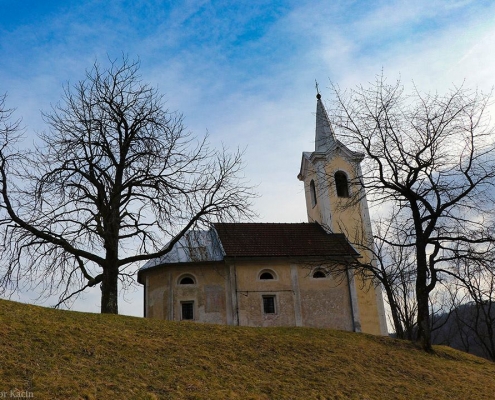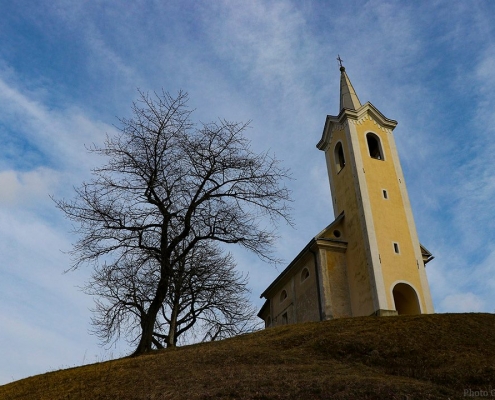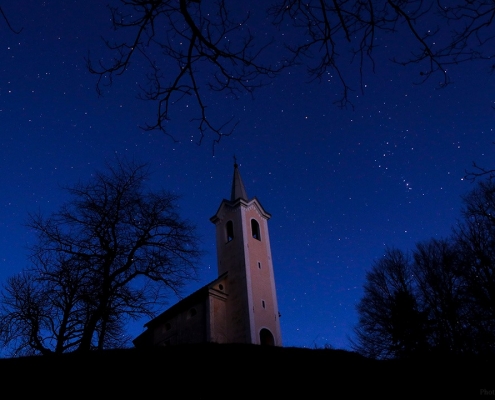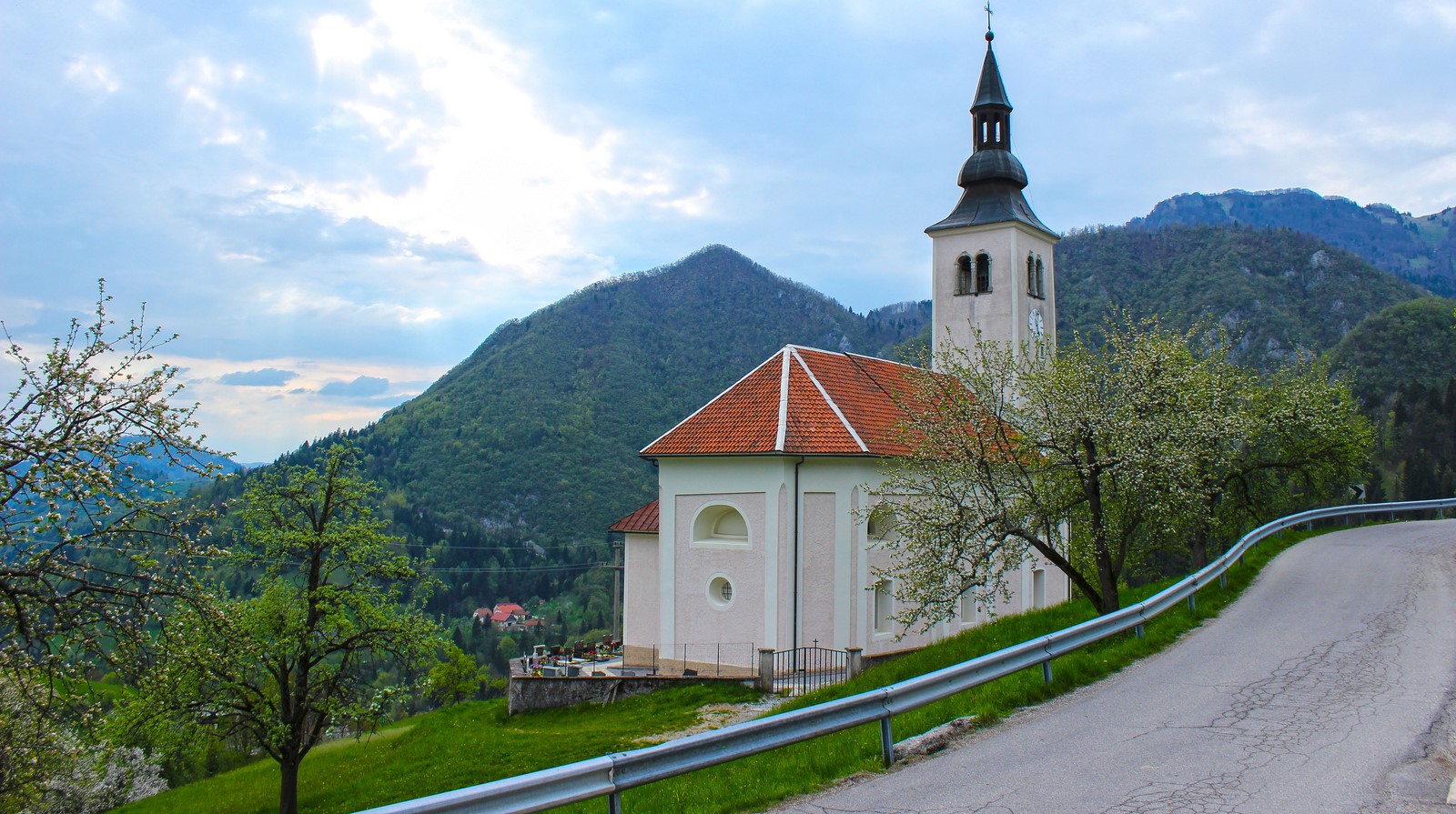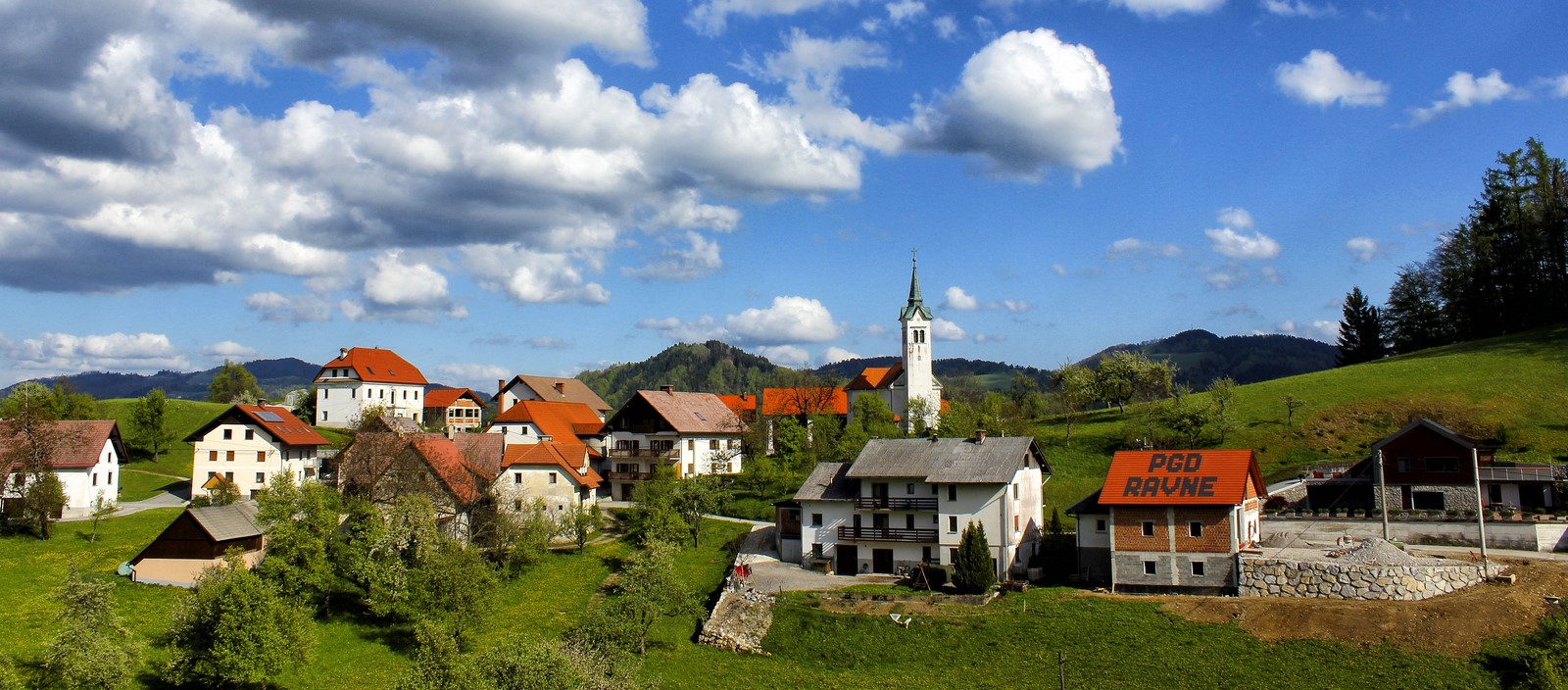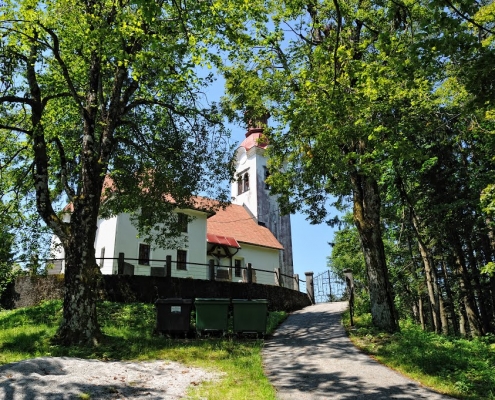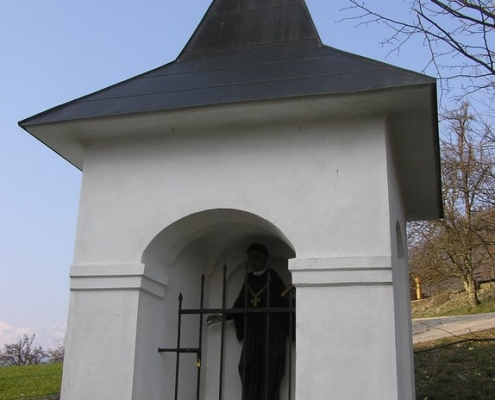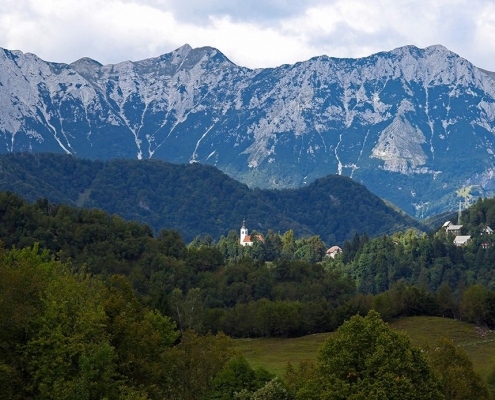Heritage / Sacral Heritage
The Church of the Nativity of the Blessed Virgin Mary in Police
The Church of the Nativity of Mary in Police is one of the oldest churches in the Cerkno region. It stands on the outskirts of the Police field, and is adorned by frescoes by Jernej from Loka dating back to 1536. This sacral monument is famous for the two separate buildings, as the bell tower stands separate from the church nave. In recent years, the church has undergone several restorations. Seismic strengthening was conducted in the context of post-earthquake restoration, and the Institute for the Protection of Cultural Heritage restored the frescoes that were later discovered on the façade.
The Church of St. Andrew in Zakriž
The first mention of the church in Zakriž goes back to 1515, but refers to the original church, which is believed to have stood elsewhere. This original location is supposed to have been (judging from field names) in Župnca, near the chapel below the village, or in Cerknovnca. Today, the Church of St. Andrew stands in the middle of the village. It was built around the year 1767. Oral tradition says that the wood for the church was driven from the village of Davča by several pairs of oxen, and the oxen and the wagons were left in Zakriž as a gift. This is probably true, as the church is very richly decorated – all the statues and the rest of the ornaments are gilded. The main altar is dedicated to St. Andrew.
The Church of St. Anne in Cerkno
The construction of the Church of St. Anne in Cerkno began in 1710. The task was taken on by the baroque architect and builder, Gregor Maček, from the village of Poljane above Škofja Loka. The church was modelled on the Ljubljana cathedral without the dome, and the façade is reminiscent of the Ursuline Church in Ljubljana. In 1717, the Eucharist was transferred from the old parish Church of St. Bartholomew to the new parish Church of St. Anne, where the first Holy Mass was also held. The construction of the church was finished in 1774. The roof of the church was damaged during bombing in WWII, and was then renovated in 1948. The last major renovation of the church took place as part of an earthquake renovation (2003–2004).
The original frescoes on the façade are assumed to be the work of the Italian painter, Giulio Quaglio. With the help of old photographs, they were repainted in 2003 by Maša Bersan Mašuk.
The Church of St. John the Baptist in Šebrelje
The Church of St. Ivan or John the Baptist stands on the edge of the Šebrelje plateau, above the steep slope rising above the valley of the Idrijca river. It stands in an idyllic place, slightly remote from the village, boasting its immaculate landscape.
The Church of St. Ivan supposedly already stood here back in 1595. It was demolished in 1763 at the order of archbishop of Gorizia, Karl Mihael Attems, so as to use the stones for the construction of the new Church of St. George in the centre of the village. People wanted to rebuild the church, and did so of their own accord and only later asking the diocese for help. The church, with a surface area of approximately 50 m2, thus carries the inscription 1870 as the construction year. The paintings are the work of master Jurij Tavčar, and the altar is the work of his assistant, Jožef Štravs. It is adorned with bells from Padua (1928)
The Church of St. Joyce in Trebenče
The Church of St. Jost in Trebenče stands on a hill offering lovely views. It was already included in the list of churches in the Cerkno region in 1595. The core of the church has preserved gothic elements, despite the 17th century reconstruction in baroque style. The main characteristic of the church are its inner frescoes, with considerable historical importance. In 2015, they were studied in detail by Tomislav Vignjević from the University of Primorska and the Science and Research Centre Koper.
“The frescoes in the succursal Church of St. Jost in Trebenče are an interesting example of mid-16th century murals.”
The Church of St. George in Šebrelje
The original Church of St. George stood a little lower, according to oral tradition, at Mlaka near the current school building. Since it was often flooded by water, the villagers decided to build a new one. During the visitation of archbishop Attems in 1762, the foundation stone for the new parish church was blessed. In 1763, the old church of St. George and the succursal church of St. John the Baptist were demolished to get the material for building a new church. The church was finished in 1765, but already burnt down in the next year, when nearby houses caught fire and the flames quickly spread to the church across the straw roofs. After twelve years of arranging and equipping the interior, the new church was consecrated in 1777.
The Church of St. Cantianus in Reka
The succursal Church of St. Cantius stands on a steep slope above the village, and was already mentioned in the visitation records from 1595. A sacristy was built onto it in the 1880–1903 period. It had two bells, both supposedly bought in the village of Nova Oselnica, but the larger bell had to be given away before WWI. The design is late Gothic, and there are three walled-in Gothic windows with a pointed arch in the presbytery. The church was probably redesigned in baroque style in the 18th century. The outside of the southern wall is decorated by a fresco from the 16th century, which depicts St. Christopher carrying Christ across water on his shoulders. According to folk tradition, the Idrijca river never carried the bodies of the drowned any further than the village of Reka, as St. Christopher protected them.
The Church of St. Catherine of Alexandria in Otalež
The church surrounded by a cemetery faces the Masore village to the west with its bell tower, while the main altar faces the direction of the Bevkov Vrh hill towards the north. The current church was built in 1844, and its predecessor already stood here in the 16th century. From the spacious entrance hallway with the stairs to the choir, a view of the entire nave opens up, which is separated from the presbytery by a few steps.
The Church of St. Paul’s Conversion in Straža
The Church of St. Paul in Straža is older than the year 1594, when the church was first mentioned. The altar is the work of local Jožef Štravs from Ravne, and the painting of St. Paul in the altar is the work of Jakob Raspet from Cerkno.
The Church of St. Thomas in Novaki
The church, which originally stood a little lower than the current one, was first mentioned in the records of a visitator from 1570. The record of the visitation in 1755 mentions that the archdeacon inspected the church and determined that it was too dangerous for worship service and could collapse, so he decided on a location for a new church. In 1758, the construction of the current Church of St. Thomas began. The year 1762 is inscribed in the arch between the nave and the presbytery today, since the church was built and ordained as sacramental in that year.
The Church of St. Ulrich in Ravne
The church of St. Ulrich in Ravne was built in a more modest form in 1659, and got its current appearance and equipment in the years from 1906 to 1908, after a thorough renovation and upgrade of the bell tower. The stone altar was brought from Gorizia in 1906. It originally stood in the church of the Jesuit monastery on the Sabotin hill, and was then put in the care of the bishop of Gorizia for several decades after the dissolution of the order. The credit for the altar being given to the church in Ravne goes to archbishop Franz Borgia Sedej, who lived in Ravne as a war refugee for a while in 1915, and managed the archdiocese of Gorizia from there.
The Church of St. Ursula in Jagršče
The parish Church of St. Ursula in Jagršče was consecrated in 1787, replacing the church which was located in the valley below the village before that. The church from 1787 is composed of a presbytery with a rectangular shape at the end, a broad rectangular nave, and a bell tower. The interior is barrel vaulted, and the equipment is from the 19th century. A characteristic feature of the church is the main altar, which is placed a little to the side and not precisely in the middle in relation to the nave. There have been many guesses as to why, but no reliable information has been found.
The Church of St. Leonard in Bukovo
The Church of St. Leonard in Bukovo is one of the oldest churches in the Cerkno region. Old records reveal that it already stood here in 1594, and that in 1633, visitator Mihael Bassi ordered the removal of the iron chain on the fence surrounding the church.
Ljudsko izročilo pravi, da je bila sedanja cerkev sezidana iz denarja, ki so ga domačini dobili s prodajo srebrnega zvona. Originalni kip Sv. Lenarta, ki je bil nekoč v leseni cerkvi, se sedaj nahaja v kapeli za starim župniščem. Kapela je bila leta 2002 obnovljena in poslikana z novimi freskami.


